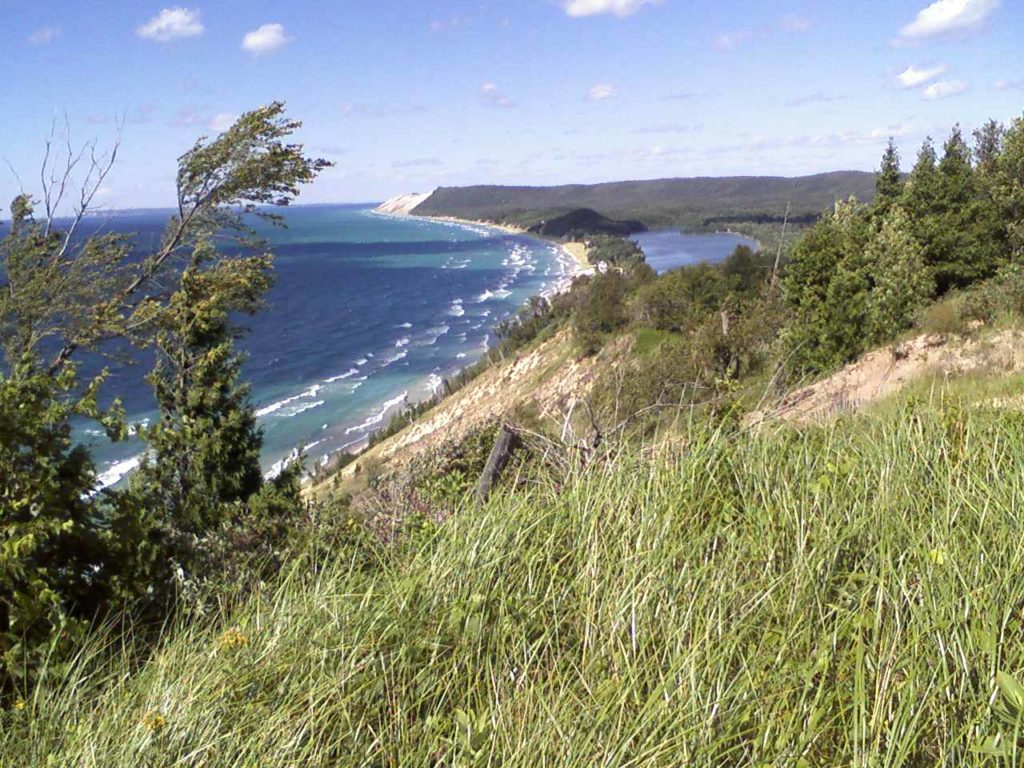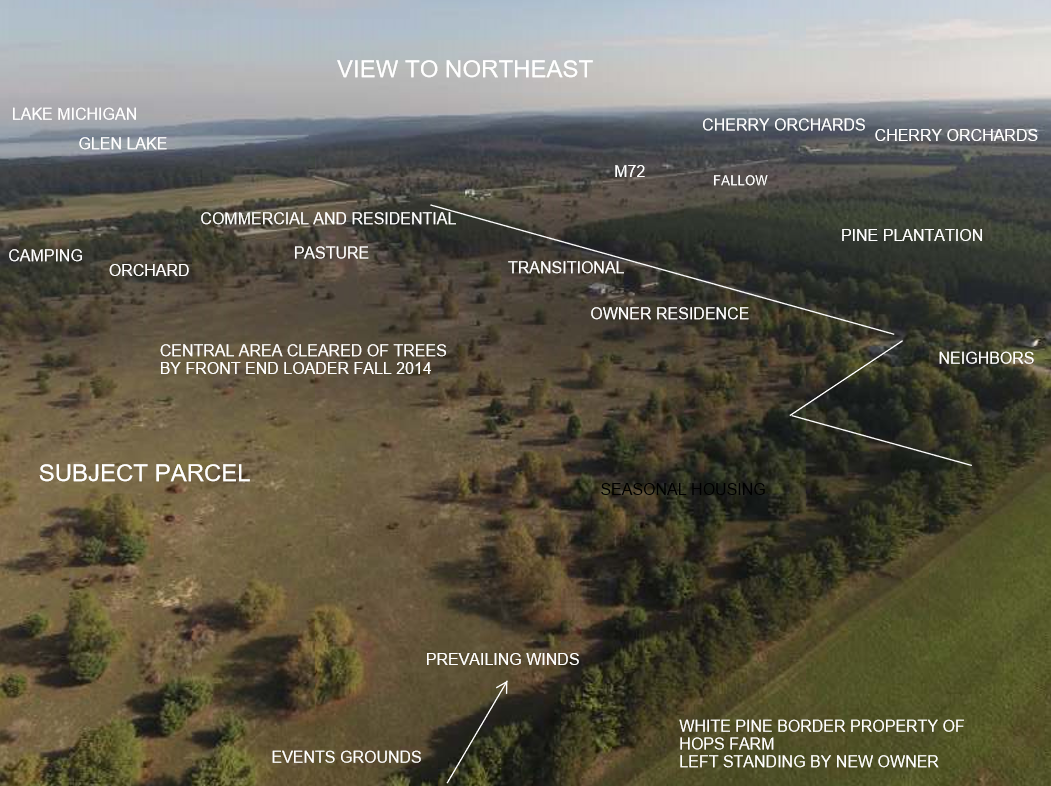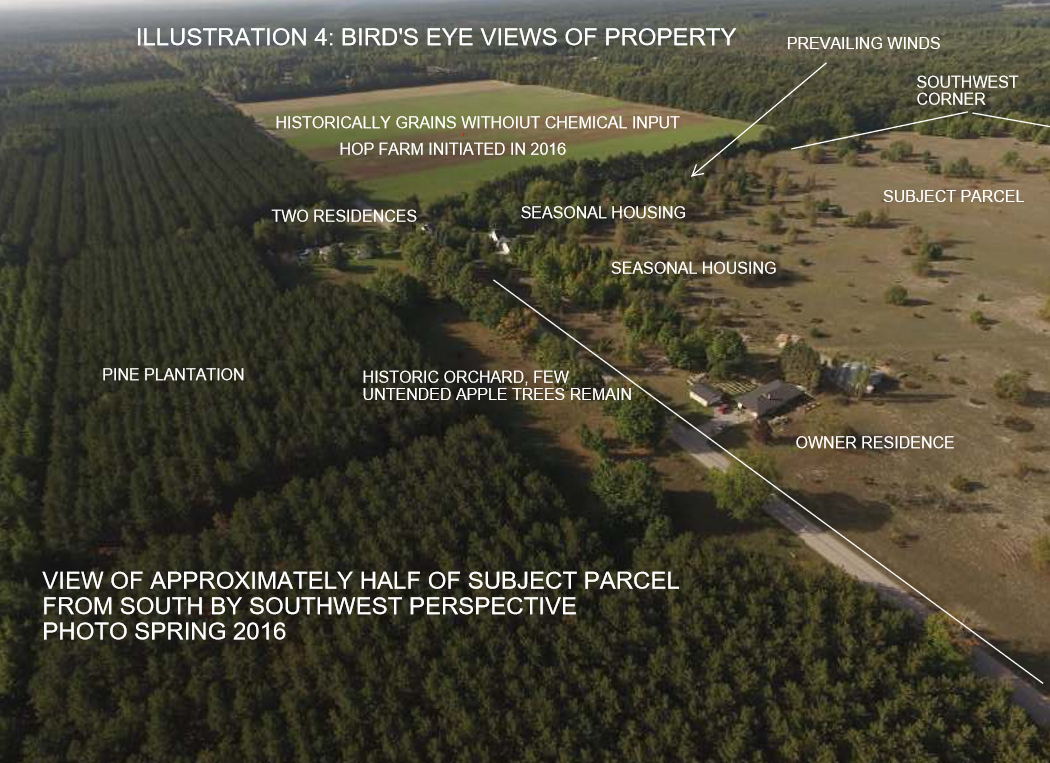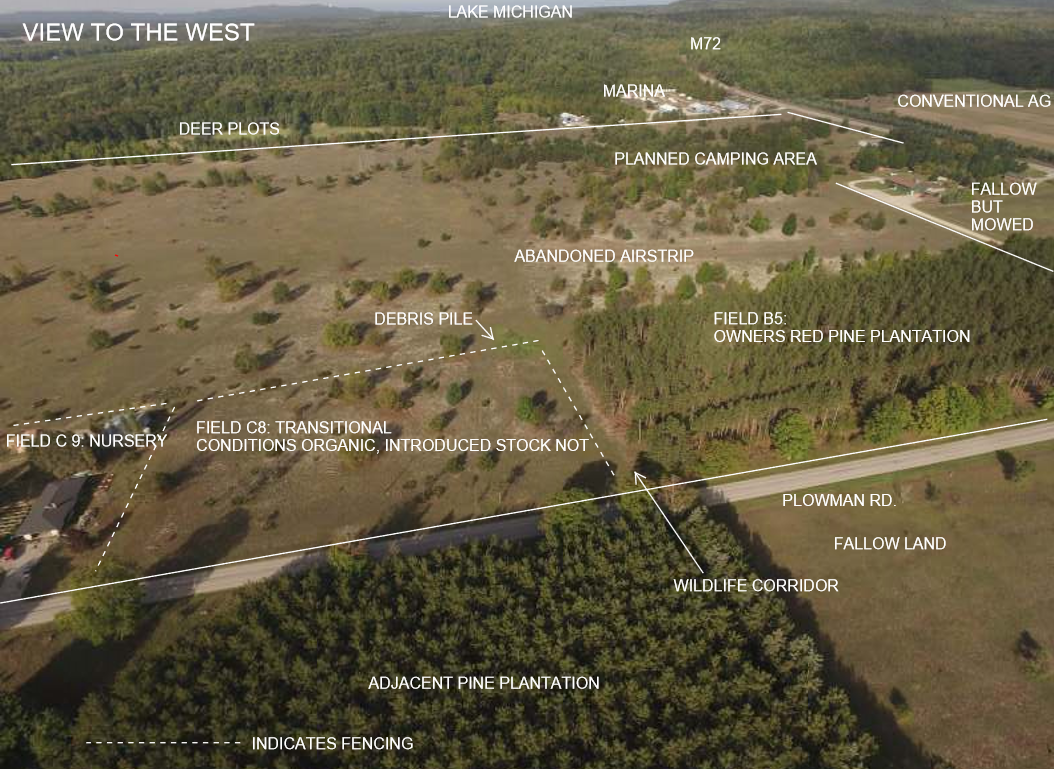Leelanau County is characterized by rolling hills created by retreating glaciers. The glaciers left behind an abundance of sand giving rise to large sand dunes and beaches and the stunning blue waters of Glen Lake. The farm is located just six miles east of the Sleeping Bear Dunces National Lakeshore Headquarters in Empire. The Lakeshore hosts 40 miles of public shoreline and an additional 35 miles on the two islands within the Lakeshore. This bucolic setting is connected to the outside world through the trending little enclave of Traverse City located 17 miles east of the farm. A mile south of the farm is state forest land.
About the Farm
The certified organic farm consists of 92 acres and is being developed using the traditional model – prior to modern agriculture – of producing as many of the farm’s needs as possible.
Grains and forage will be produced as winter-feed for developing flocks of rare breeds of grazing animals. In addition to these types of traditional farm crops including dry legumes, truck patch-scale vegetables will be produced along with groves of fruit and nut trees and berry patches.
Ultimately Aquaponics will be developed; cold ground water ultimately used for irrigation will first serve to raise cold-water fish such as perch. An additional focus is that of integrating native perennial edible plants throughout the farm ecosystem.
The farm’s owner began his studies in Restoration Ecology as an intern at the International Crane Foundation in Baraboo Wisconsin. There he assisted early efforts to convert the degraded sandy soils of abandoned farmland to prairie vegetation through the wild collection of prairie seed from nearby prairie remnants. This model is now being adopted in Michigan.
Following the internship the owner attended the University of Wisconsin-Madison Landscape Architecture Graduate Program where he also studied research methods and Restoration / Plant Ecology. He then began an ecological consulting and contracting business (Inner-coastal Ecological Services) in Madison – where he still maintains an office in a historic building that he restored. This restoration complimented his studies in Historic Preservation at UW-Madison.





